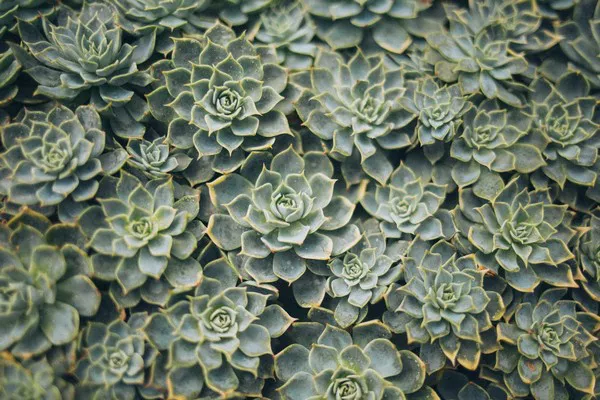Succulents have gained immense popularity as low-maintenance, resilient plants that thrive in various climates. Whether you’re a seasoned gardener or a novice enthusiast, understanding the key factors influencing succulent growth is crucial. Among these factors, the type of soil plays a pivotal role in determining how well succulents flourish. In this comprehensive guide, we will explore the characteristics of an ideal succulent soil, ensuring that your plants not only survive but thrive in their environment.
The Unique Needs of Succulents
Succulents, characterized by their fleshy leaves and ability to store water, have specific requirements that differ from conventional plants. As such, providing them with the right soil is paramount for their overall well-being. A succulent-friendly soil should address two primary concerns: drainage and aeration. These factors prevent waterlogged conditions, a common enemy of succulents, promoting optimal root health and growth.
Understanding Drainage: A Vital Element for Succulent Success
Succulents despise sitting in waterlogged soil, making efficient drainage a non-negotiable feature in their growing medium. Well-draining soil prevents root rot and other moisture-related issues, fostering an environment where succulents can thrive. To achieve this, a mix that includes materials such as perlite, pumice, or coarse sand is essential. These components create air pockets, ensuring excess water doesn’t linger around the roots.
The Role of Aeration in Succulent Soil
Adequate aeration in the soil is equally critical for succulent health. The roots of succulents require oxygen to function optimally, and a well-aerated soil mix facilitates this exchange. Incorporating materials like perlite or pine bark into the soil ensures that air circulates freely, creating an environment conducive to healthy root development. As succulents are prone to root diseases, good aeration helps mitigate such risks, contributing to their long-term prosperity.
Balancing Act: Finding the Ideal Soil Mix for Succulents
Creating the perfect succulent soil mix involves striking a delicate balance between drainage, aeration, and nutrient content. A popular DIY mix comprises equal parts of potting soil, perlite, and coarse sand. This combination provides the necessary structure for succulent roots to establish themselves while preventing water retention. Additionally, amending the mix with organic matter like well-rotted compost adds essential nutrients, promoting overall plant vigor.
See Also: How to Treat Bugs on Succulents?
Commercial Succulent Soil Mixes: An Overview
For those looking for convenience, numerous commercial succulent soil mixes are available on the market. These pre-packaged blends often combine well-draining components like perlite or vermiculite with a balanced ratio of organic matter. While convenient, it’s essential to review the ingredients to ensure they align with the specific needs of your succulents. Experimenting with different mixes or amending commercial ones can help tailor the soil to your plants’ requirements.
Factors Influencing Soil pH and Its Impact on Succulents
Succulents exhibit optimal growth within a slightly acidic to neutral soil pH range. Monitoring and adjusting the pH of the soil is vital, as it directly affects nutrient availability. Most succulents prefer a pH range between 6.0 and 7.0. Testing the pH periodically and amending the soil accordingly with lime or sulfur ensures that succulents can access essential nutrients, promoting robust growth and vibrant colors.
The Influence of Soil Composition on Watering Practices for Succulents
The relationship between soil composition and watering practices is integral to succulent care. The well-draining nature of the soil mix prevents water from pooling around the roots, minimizing the risk of overwatering. Succulents thrive in environments where the soil dries out between waterings, mimicking their natural habitat. Understanding the water retention characteristics of the soil helps establish a consistent and effective watering routine, fostering optimal succulent health.
Tailoring Soil Mixes for Different Succulent Varieties
Succulents encompass a vast array of species, each with its unique characteristics and requirements. Tailoring the soil mix to suit the specific needs of different succulent varieties ensures their individual success. For example, cacti, a subgroup of succulents, may benefit from a mix with a higher proportion of sand to enhance drainage further. Researching the specific needs of your succulent varieties and adjusting the soil composition accordingly maximizes their growth potential.
Repotting Succulents: When and How to Refresh the Soil
Over time, succulent soil may become compacted or depleted of nutrients, necessitating repotting. Knowing when and how to repot succulents is crucial for maintaining their vitality. Typically, repotting is recommended every 1-2 years, or when you observe signs of overcrowded roots or declining plant health. During the repotting process, gently remove the succulent from its container, inspect the roots, and refresh the soil mix to provide optimal growing conditions.
Conclusion
In conclusion, the key to successful succulent growth lies in understanding and addressing their unique soil requirements. The ideal succulent soil mix promotes efficient drainage, optimal aeration, and an appropriate pH level, creating an environment where succulents can thrive. Whether you opt for a DIY mix or choose a commercial blend, the emphasis should always be on achieving the delicate balance needed to support these resilient plants. By focusing on the soil, you pave the way for a flourishing succulent garden, filled with vibrant, healthy plants that capture the essence of nature’s beauty.


